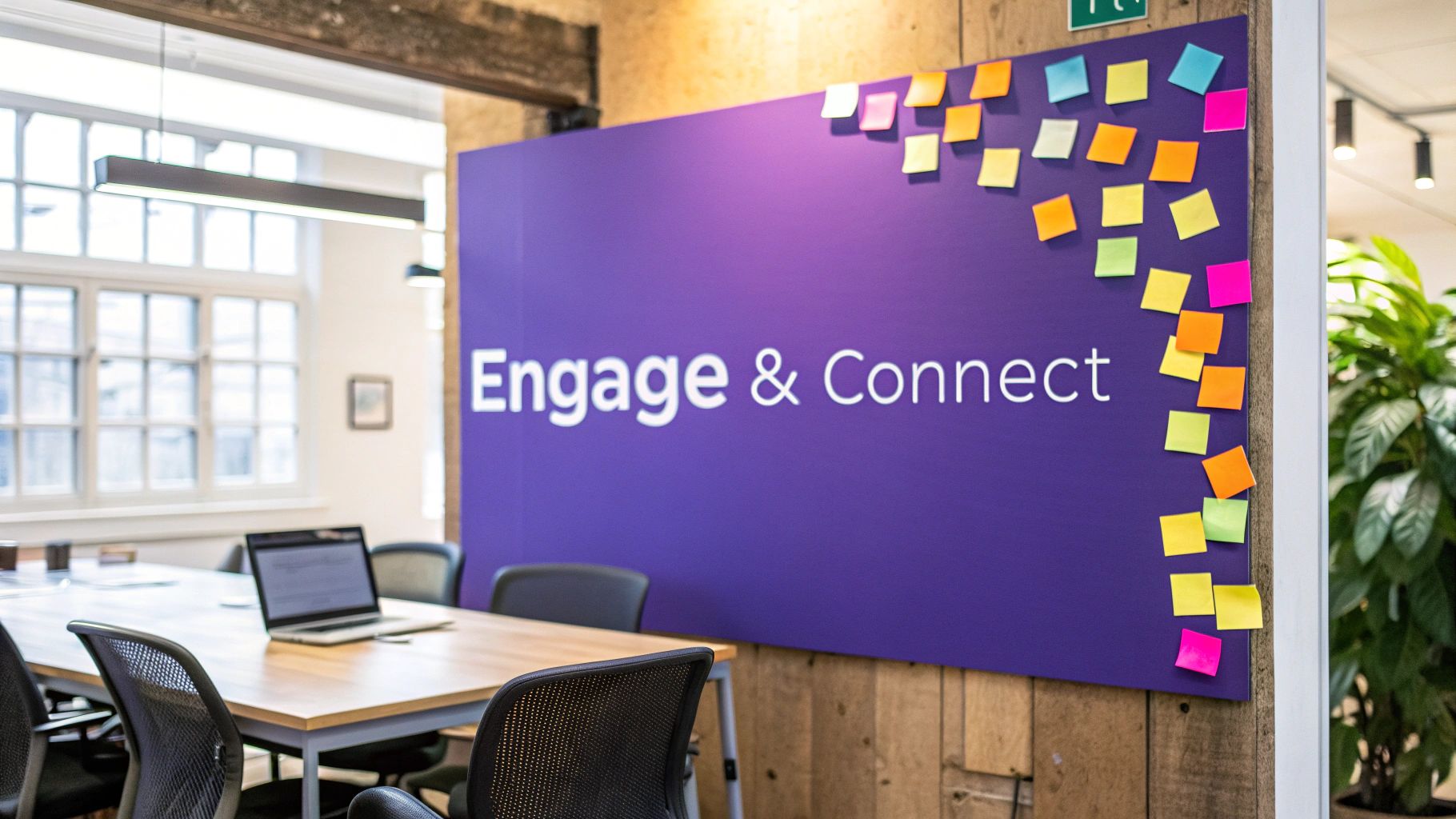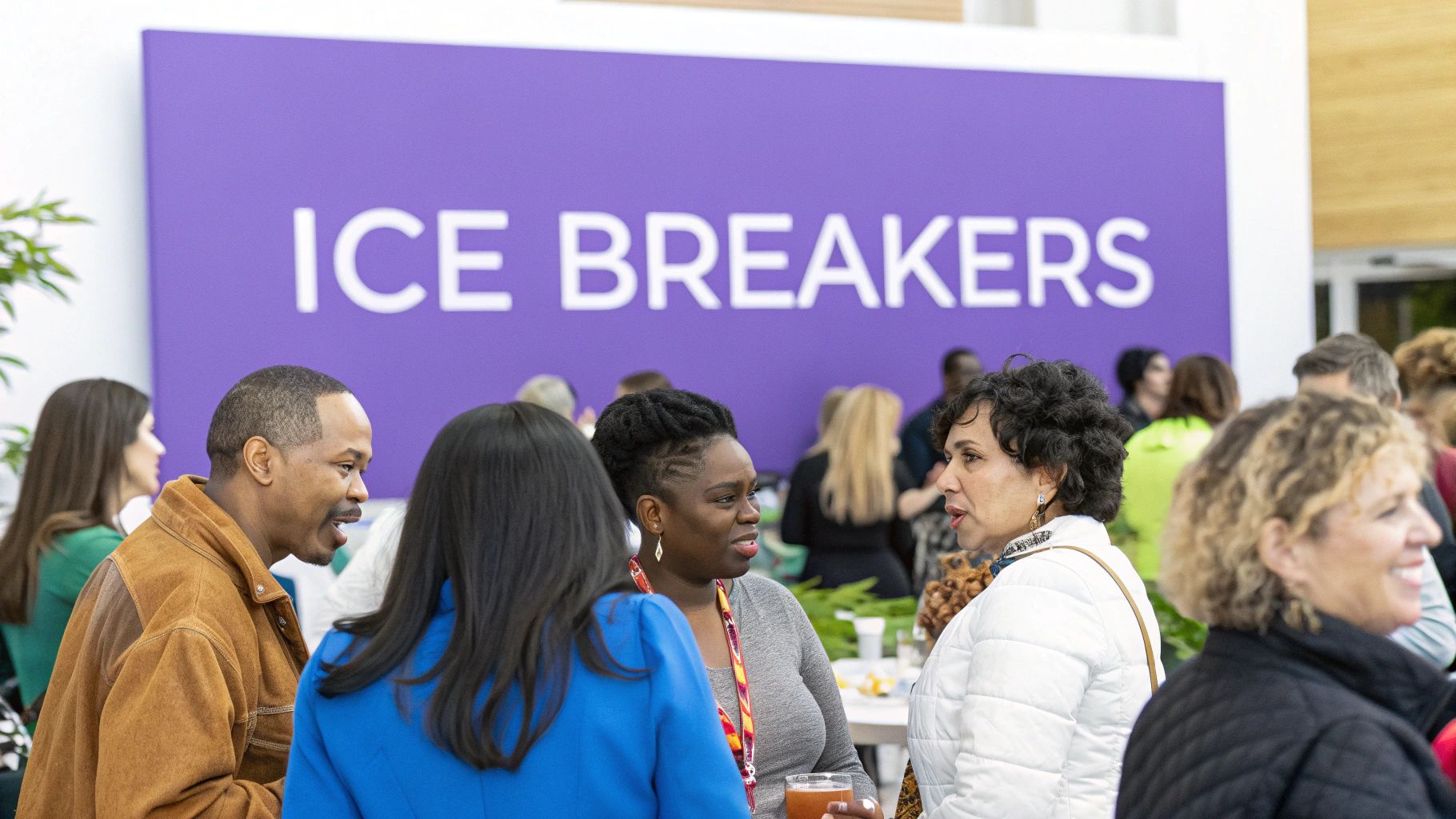The Psychology Behind Powerful Ice Breakers Questions

Good ice breaker questions do more than just start conversations – they help people feel comfortable and connected. These questions tap into our basic need to relate to others and feel like we belong. When chosen thoughtfully, the right ice breaker can completely change how a group interacts, whether in a meeting room, classroom, or social event.
Building Psychological Safety
One key benefit of ice breakers is creating psychological safety – an environment where people feel they can be themselves without worrying about negative judgment. When participants feel safe, they're more likely to join in discussions, share ideas, and form real connections with others. Simple questions that highlight shared experiences can help reduce anxiety and make everyone feel included.
The Power of Shared Experiences
Questions that invite people to share personal stories, even small ones, work especially well. Opening up about experiences helps create genuine moments between people. When one person shares something authentic about themselves, it encourages others to do the same. This back-and-forth sharing helps create a relaxed, open atmosphere where real connections can form.
Timing and Context Matter
The success of an ice breaker depends heavily on when and where you use it. A fun, energetic question that works great at a social event might fall flat in a formal business setting. The timing matters too – a quick, upbeat ice breaker can energize people at the start of a meeting, while a more reflective question might work better to wrap things up. Research shows ice breakers have been used in group settings since the early 1900s. According to studies, simple questions like "What are you reading right now?" or "What new skill would you love to learn instantly?" are among the most effective for building bonds. For more data on popular ice breakers, check out this resource: 25 Most Popular Icebreakers
Facilitating Meaningful Interactions
The main goal of any ice breaker should be to create real connections between people. This means moving past surface-level small talk to questions that spark genuine engagement. By understanding the psychology of good ice breakers, leaders can design questions that not only warm up the room but help build lasting relationships and community. This is especially important now that many teams work remotely and have fewer chances for casual interaction.
Mastering Virtual Ice Breakers That Actually Engage

Making remote meetings feel personal and connected can be tricky. But with the right ice breaker questions, you can help team members form real bonds, even through a screen. Simple greetings like "how are you?" often fall flat – the key is asking questions that spark authentic conversations.
Crafting the Right Ice Breaker Question
Good virtual ice breakers need thoughtful questions that invite detailed responses. Rather than basic questions like "What's your favorite color?", try something like "If you could paint your office any color, what would you choose and why?" This gets people sharing their personality and leads to natural discussions. Consider your meeting's purpose too – use light questions for casual check-ins and deeper ones for problem-solving sessions.
Overcoming Virtual Barriers
Some team members may feel less comfortable with video meetings and technology. Start with simple ice breakers everyone can easily join in with, regardless of their tech skills. When people feel included from the start, they're more likely to participate throughout the meeting.
Questions like "If you could instantly transport anywhere for a day, where would you go?" or "What's the most interesting food you've tried?" work especially well online. Studies show these types of questions can boost engagement by up to 50% in virtual meetings. Find more engaging ice breaker ideas here: 200 Great Ice Breaker Questions for Virtual Meetings.
Maintaining Energy and Engagement
Getting people involved in virtual meetings takes effort. Try mixing in interactive elements like quick polls or fun quizzes. Breaking into smaller groups also helps create closer connections. These simple activities keep energy levels up and stop meetings from dragging. When you blend in these engaging elements, ice breakers can set a positive tone that carries through the whole meeting.
Transforming Classrooms Through Strategic Ice Breakers

Teachers are discovering how well-chosen ice breaker questions can energize their classrooms. These questions do much more than just fill time – they help students connect, spark interest in learning, and create a welcoming environment where everyone feels comfortable participating.
Age-Appropriate Ice Breaker Questions
The best ice breakers match students' age and development level. For younger kids, simple questions about pets, favorite foods, or hobbies work well. Older students respond better to deeper questions about their goals, personal challenges, or views on current events. The key is creating a space where students feel safe sharing their thoughts.
Integrating Curriculum and Assessment
Ice breakers can double as learning tools. Teachers can weave in subject-related questions to review material in a relaxed way. They also use ice breakers to check what students already know before starting a new topic. This gives teachers a sense of the class's starting point so they can adjust their lessons. Students find this approach much less stressful than traditional Q&A.
Building Inclusive Classroom Communities
Ice breakers help create classrooms where everyone belongs. When students share their unique experiences and find common interests, it breaks down social walls. Questions focused on shared goals or experiences help kids connect more deeply. Including diverse cultural themes helps students appreciate different viewpoints and backgrounds. For history classes, creative activities like "Would You Rather" scenarios based on historical events get students excited about the subject. Find more history-themed ice breakers here: Explore History Ice Breakers. By using these techniques thoughtfully, teachers can make their classrooms places where learning becomes an adventure that students take together.
Measuring and Maximizing Ice Breaker Impact

Good ice breaker questions need more than just gut feeling – they require careful measurement and evaluation. By looking at real feedback and results, you can understand what questions truly connect with people and create meaningful conversations.
Developing Meaningful Metrics
Setting clear goals helps track if your ice breakers are working. First, decide what you want to achieve – more participation, better team bonding, or a relaxed mood? Then choose specific ways to measure success. For example, count how many people speak up after the ice breaker, or look for signs of increased teamwork in later activities.
Gathering Actionable Feedback
Feedback is key to making ice breakers better. Use simple surveys, casual check-ins, and watch how people react during activities. Ask participants directly – Did they feel at ease? Was the question interesting? Their insights help shape future ice breakers that better fit your group's style and needs. Keep gathering feedback to continuously improve.
Refining Your Approach
Ice breakers work best when they create real connections between people. Research shows that 70-80% of participants find ice breakers helpful, especially in online meetings where building relationships is harder. Popular questions like "What's something new you've learned about yourself recently?" and "If your mood was an amusement park ride, which would it be?" tend to get great responses. Find more engaging ice breaker questions here: Explore More Ice Breakers. Remember that different settings need different questions – what works for team building might not suit a classroom. Use your feedback and results to pick the right questions and get the most from your ice breakers.
Crafting Memorable Event-Specific Ice Breakers
Basic ice breaker questions rarely create real engagement. The key is customizing your ice breakers specifically for each event. When you align questions with the event's purpose and theme, participants connect more naturally and get more value from the experience.
Themed Ice Breakers for Enhanced Engagement
A well-themed ice breaker turns an ordinary event into something special. For example, at a sustainability conference, you might ask questions about environmental initiatives or green business practices. During team retreats, focus on questions about collaboration styles and individual strengths. These targeted questions spark meaningful conversations that generic ones miss.
Adapting Classic Ice Breakers
You can refresh familiar ice breakers by giving them an event-specific twist. Take "Two Truths and a Lie" – at a marketing conference, ask participants to share two real marketing campaigns they've run and one made-up one. This simple change makes the activity more relevant and helps people learn from each other's work experiences.
Considering Context and Culture
Match your ice breakers to the event's formality level and cultural makeup. Corporate events need more professional questions, while social gatherings can be playful. Be mindful of cultural differences and avoid potentially uncomfortable topics. History-themed questions have become increasingly popular, offering a unique way to engage participants. Simple questions like "Which historical period would you visit if you could?" create fascinating discussions. This approach has proven successful, with 90% of participants reporting higher engagement. Learn more about historical ice breakers here: History-Themed Ice Breaker Ideas.
Balancing Creativity and Effectiveness
The challenge is creating ice breakers that are both fun and purposeful. They should help achieve event goals, whether that's team bonding, brainstorming, or gathering participant insights. When designed thoughtfully, ice breakers do more than just warm up the room – they actively contribute to the event's success and create lasting connections between participants.
Scaling Success: Ice Breakers for Every Group Size
Choosing the right ice breaker questions for different group sizes makes a big difference in how well they work. An activity that's perfect for a small team might not click with a bigger crowd. It's important to pick ice breakers that match how each group naturally interacts.
Small Groups: Fostering Intimacy and Connection
With small groups (under 10 people), ice breakers can dig deeper and get more personal. The setting lets people share real experiences and connect meaningfully. Asking questions like "What's one thing you're learning right now?" often leads to genuine conversations where people discover shared interests. These discussions help build real connections between teammates.
Medium Groups: Balancing Participation and Engagement
For medium groups (10-30 people), you need to find the sweet spot between individual sharing and keeping everyone involved. While personal questions still work, timing becomes key. Quick activities like "What's your favorite way to unwind?" or "Two Truths and a Lie" let more people participate while still building bonds. This helps everyone contribute without the session running too long.
Large Groups: Creating Shared Experiences
In large groups (over 30 people), ice breakers need to unite the crowd in a shared moment. Simple polls, group challenges, or using a shared virtual board where everyone answers one question can work well. For example, having everyone write one word about their current mood creates a visual snapshot of the group's energy. This helps people feel part of something bigger and opens doors for more conversation.
Adapting Your Approach: Key Considerations
No matter the group size, ice breakers should fit the setting. Business meetings might focus on professional goals, while classroom ice breakers could tie into lesson topics. Being thoughtful about these details helps make sure the activity adds real value.
Ask participants what they thought about the ice breakers – their feedback helps you keep improving. When you understand what makes each group tick, simple questions become powerful tools for building trust, teamwork, and positive energy.
Ready to make your remote team's brainstorming sessions more productive? Check out Bulby, the AI-powered brainstorming tool that helps remote teams generate fresh ideas and achieve better results.

